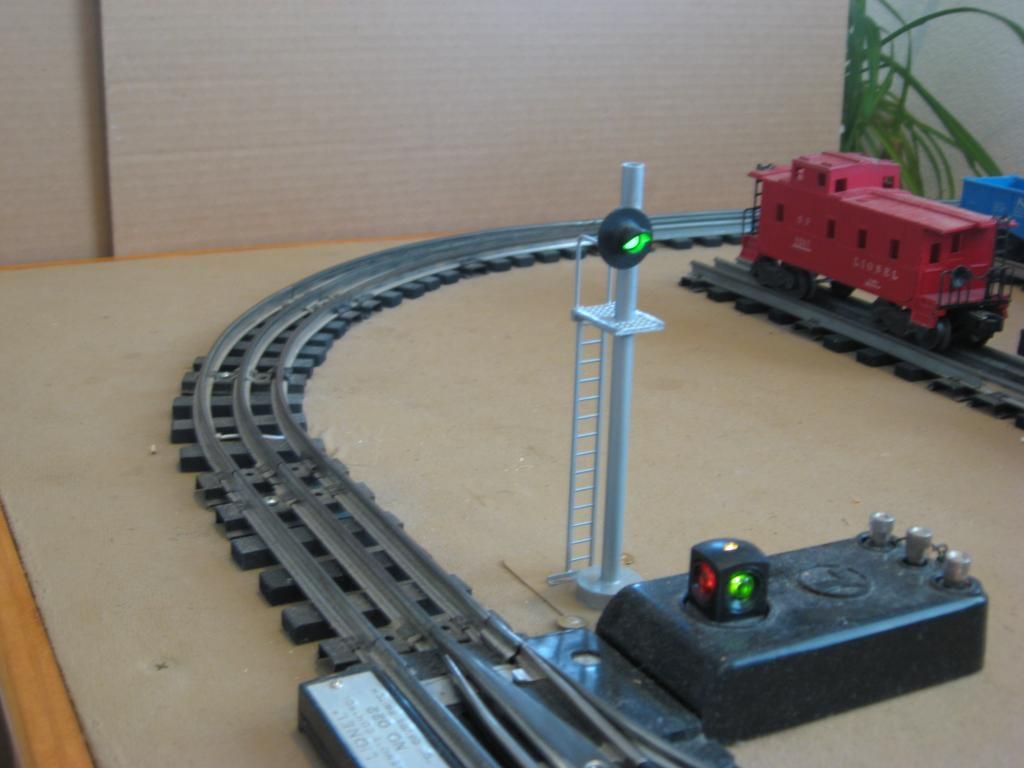I have several blocks on my layout for signals. My track is O Gauge Tubular and I use the basic outside control rail and relay to change signal from green to red when there is a train in the block. They have worked quite well for several years. My signals are scratch built out of styrene with Radio Shack LEDs. Some are 2 color signals Green over Red. And some are searchlight signals using Radio Shack 276-0028 LED that will display green or red.
Here is a picture of one of the Seachlight signals.

One of the blocks I have a searchlight signal at each end of the block. I noticed a problem a couple days ago when I turned on my layout power and that set of signals were dark. When a train entered the block both signals changed to red but when the train cleared the block the signals just went dark. The relay is working fine. I messed around with the wires for a while - tried changing to different size resistors - and the green aspect came back - on both signals. Then I noticed at one time when both signals were showing green - I touched my track and had a static spark - and the green went out on both signals wired to this block. The relay is working and will change the signals to red but the signal will not go back to green. None of the other signals on my layout were affected - they keep working fine.
Then I figured out that when the green has gone dark - If I jump the resistor with a short piece of wire - that the green will come back - remove the jumper wire and the signal is now fine - green and working as they should. Static spark - green goes out - use jumper wire to bypass resistor just for a moment and green comes back. Both Signals.
Here is my wiring plan for this block signal set-up. The actual length of the control rail is around 8 feet. Again - I have several signals on my layout - and only this pair of signals is having this problem. Any Ideas ? What is the Static electricity doing ? Me thinks it has something to do with the resistors ??
Steve





